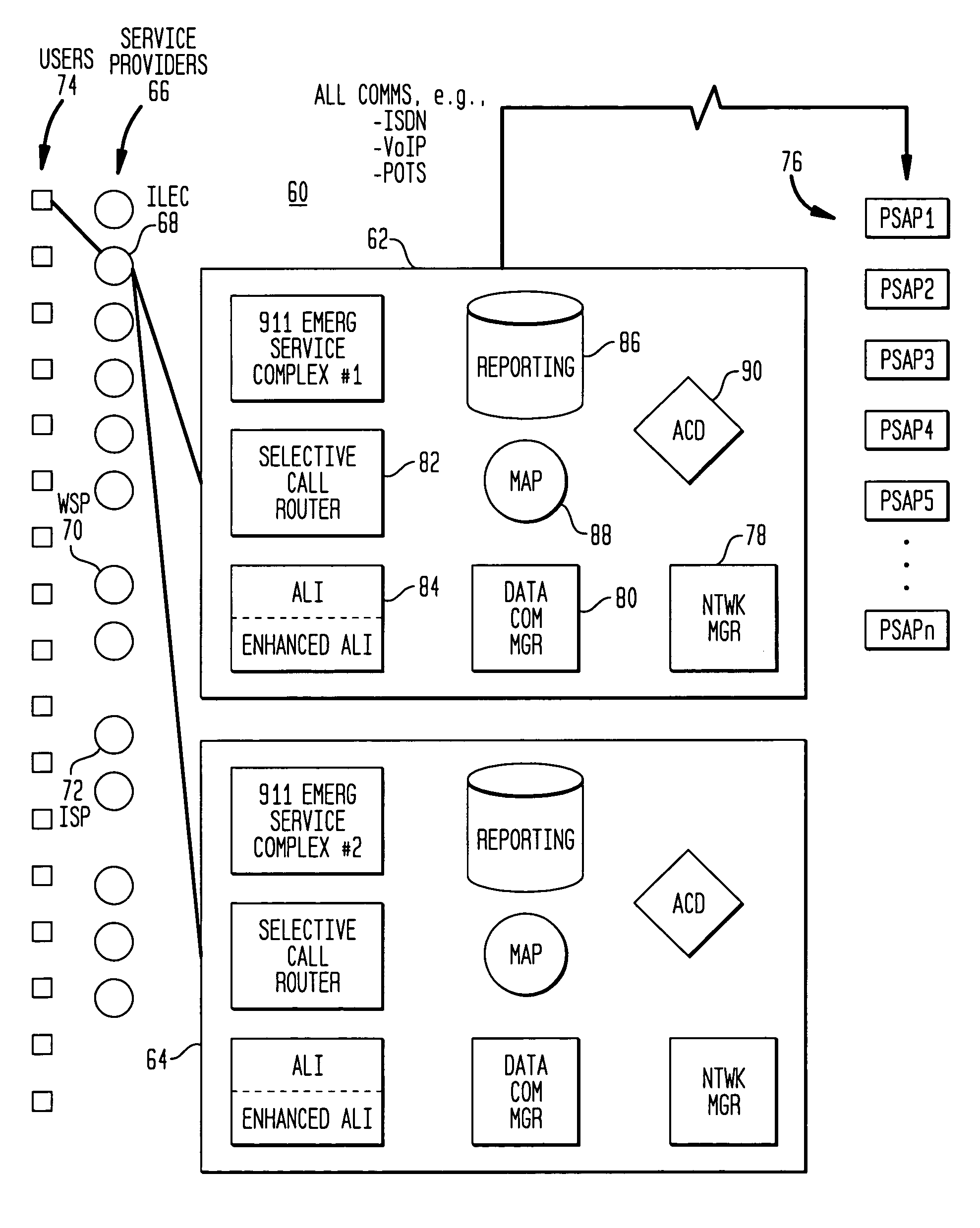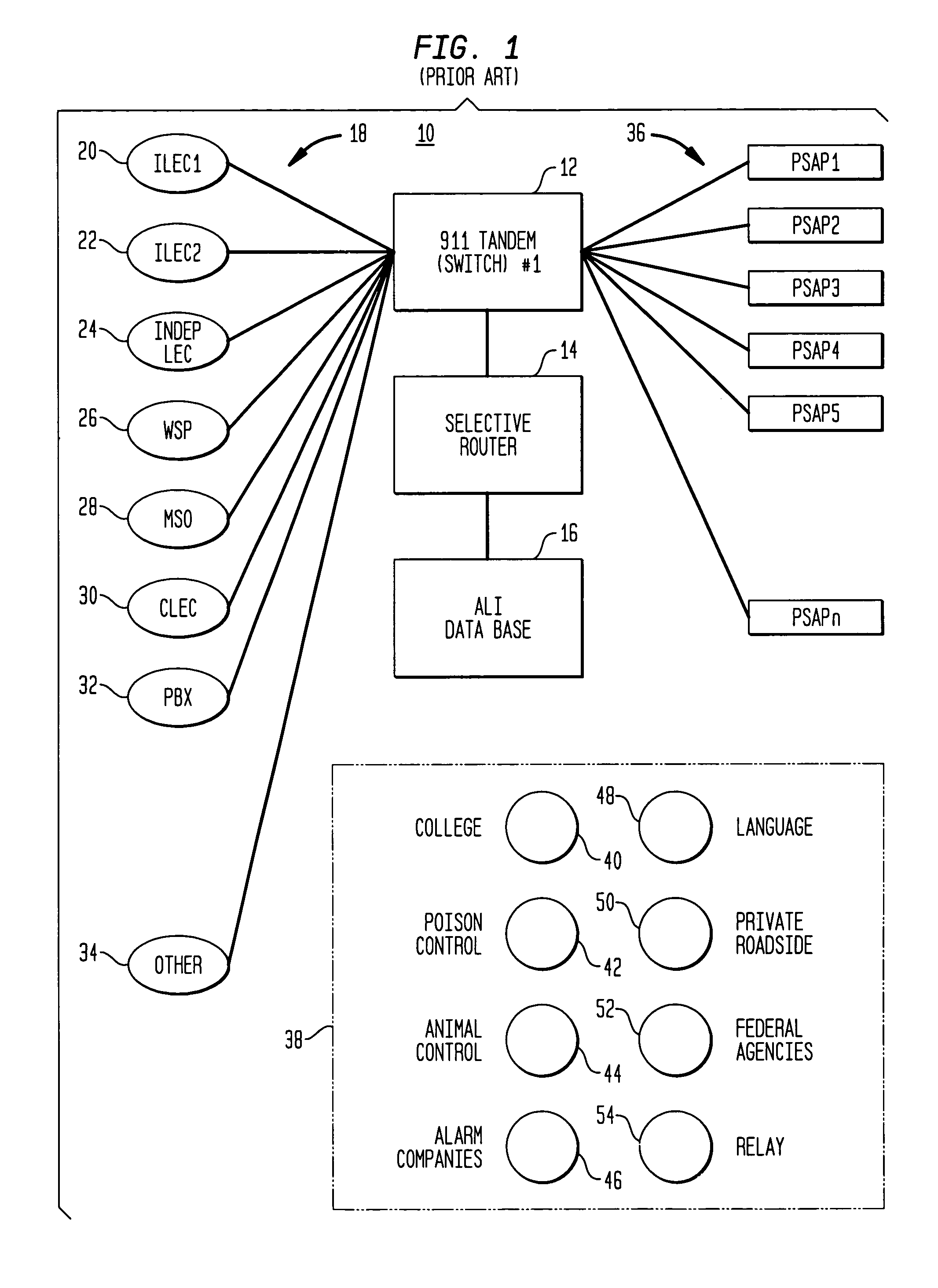System and method for accessing personal information relating to a caller in a remote telecommunication network
a technology of a telecommunication network and a caller, applied in the field of telecommunication systems with geographic sensitivity, can solve the problems of not supporting interconnection with other telecommunication providers such as independent telephone service companies, alternate local exchange carriers (alecs), and the inability to identify the caller, etc., to achieve the effect of enhancing network management capabilities, ensuring reliability, and ensuring reliability
- Summary
- Abstract
- Description
- Claims
- Application Information
AI Technical Summary
Benefits of technology
Problems solved by technology
Method used
Image
Examples
first embodiment
[0135]FIG. 10 is a schematic diagram illustrating a personal information access system according to the present invention. In FIG. 10, a geographic area 1000 includes city 1002 (other cities are not illustrated in detail in FIG. 10 in order to keep FIG. 10 uncomplicated). Geographic area 1000 is served by a plurality of public switched telephone networks (PSTNs) PSTN1, PSTN2, PSTN3, PSTNn. There is usually at least one PSTN associated with each city, e.g., city 1002. In this context, a PSTN is regarded as including any publicly accessible phone network, including wireless service networks, Internet service providers (ISPs), satellite telephone networks, paging networks and the like.
[0136]Each PSAPn may have an associated information store. Accordingly, PSAP1 has an associated information store 1010. PSAP2 has an associated information store 1012. PSAP3 has an associated information store 1014. PSAP4 has an associated information store 1016. PSAPn has an associated information store ...
second embodiment
[0144]FIG. 11 is a schematic diagram illustrating a personal information access system according to the present invention. In FIG. 11, a geographic area 1100 includes cities 1102, 1105, 1106, 1108. Geographic area 1100 is served by a public switched telephone network (PSTN). In this context, a PSTN is regarded as including any publicly accessible phone network, including wireless service networks, Internet service providers (ISPs), satellite telephone networks, paging networks and the like.
[0145]Special number systems are representatively illustrated in this disclosure using the example of an emergency services system, commonly referred to as a 9-1-1 system because callers dial the digits 9-1-1 to contact the system. In FIG. 1, respective cities 1102, 1104, 1106, 1108 are each served by at least one public safety answering position (PSAP). Accordingly, in geographic area 1100, PSAP1 serves city 1102. Similarly, two PSAPs—PSAP2 and PSAP3—serve city 1104. PSAP4 serves city 1106 and PS...
PUM
 Login to View More
Login to View More Abstract
Description
Claims
Application Information
 Login to View More
Login to View More - R&D
- Intellectual Property
- Life Sciences
- Materials
- Tech Scout
- Unparalleled Data Quality
- Higher Quality Content
- 60% Fewer Hallucinations
Browse by: Latest US Patents, China's latest patents, Technical Efficacy Thesaurus, Application Domain, Technology Topic, Popular Technical Reports.
© 2025 PatSnap. All rights reserved.Legal|Privacy policy|Modern Slavery Act Transparency Statement|Sitemap|About US| Contact US: help@patsnap.com



